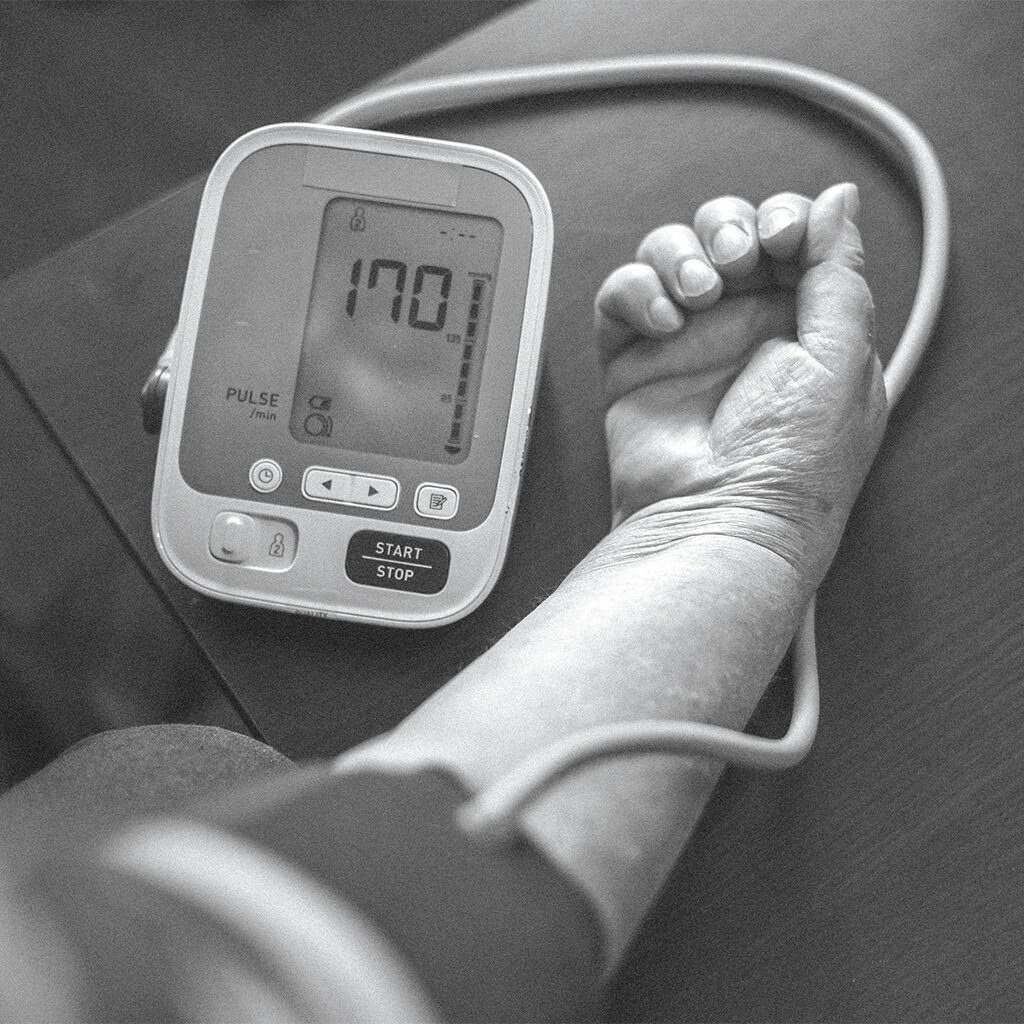Understanding The Most Common Arrhythmia
Atrial fibrillation is the most common type of abnormal heart rhythm in the United States, but many people don’t realize they are living with it until it becomes a problem. Untreated atrial fibrillation can have serious consequences including stroke or heart failure, so it is important to understand the symptoms in order to catch it early. Here, local experts share critical information about diagnosing, treating, and managing atrial fibrillation.
What is Atrial Fibrillation?
Atrial fibrillation (AFib) is a type of arrhythmia, which is an irregularity that causes the heart to beat too quickly, too slowly, or in an abnormal rhythm. The heart has two upper chambers (atria) and two lower chambers (ventricles) which must work together to effectively circulate blood through the body. With atrial fibrillation, abnormal electrical signals in the heart cause the upper and lower chambers to beat out of sync, impairing blood flow.
“AFib is a chronic disease which typically starts out as paroxysmal (coming and going on its own) and may progress to persistent (lasting more than a week) or even permanent AFib if left untreated,” says Dr. Sean Dunn, a cardiac electrophysiologist with Hamilton Physician Group.
Symptoms


- Rapid heartbeat or palpitations
- Chest pain
- Feeling dizzy or lightheaded
- Fatigue and/or limited
ability to exercise - Shortness of breath
- General feelings of weakness
The effects of AFib vary from patient to patient. Dr. Kelly Richardson, a cardiologist and cardiac electrophysiologist with The Chattanooga Heart Institute, explains, “Some people can feel their heart racing or may notice palpitations. Some patients have described it as a sensation like a fish is flopping around in their chest. Others don’t really feel the heart itself, but they notice things like shortness of breath, fatigue, or swelling in their legs that impact their ability to perform daily activities.”
According to Dr. Harish Manyam, chief of cardiology and director of electrophysiology at Erlanger Health System, most AFib patients will notice at least some symptoms, but roughly 15% of AFib cases are asymptomatic. He warns, “Their first sign of having AFib could be a stroke.” For this reason, it is best to speak with your doctor about any new symptoms, even if they are vague.
Atrial Fibrillation and Stroke
The greatest danger associated with AFib is stroke because AFib prevents proper blood flow, which increases the risk of blood clots forming. Dr. Richardson explains, “There is a pocket on the outside of the left atrium called the left atrial appendage, and this is where 90% of the clots that cause AFib-related strokes are formed. If that clot gets dislodged, it can then go to the brain and cause a stroke.”
Even mild AFib increases the risk of stroke significantly. “Data shows that clots can form in just minutes. We’ve seen some correlation with people who have had just five to six minutes of AFib that has been associated with a stroke in some cases,” says Dr. Manyam.
“Certain patients are at a higher risk for developing stroke. Known risk factors for stroke include being 65 or older, female gender, history of prior stroke, and other medical conditions such as high blood pressure, diabetes, heart failure, and vascular disease. The risk of stroke increases with each additional risk factor,” says Dr. Dunn.
Risk Factors









Sleep Apnea: Having sleep apnea puts you at significant risk of AFib. “Sleep apnea is related to an obstruction of the airways that causes an increased pressure in the lungs, and that pressure can actually stimulate the areas that cause AFib,” Dr. Manyam explains. “It is very hard to control AFib when a patient also has sleep apnea, so it is very important to treat that as well.”
Obesity: “Obesity is a big contributor, and studies have shown that losing weight helps reduce inflammation in the heart and therefore reduces the risk of AFib. On the other hand, if patients continue to gain weight, the AFib will continue to progress,” says Dr. Richardson.
Alcohol Consumption: “Binge drinking is a known contributor to atrial fibrillation. A long time ago, it was nicknamed ‘the holiday heart’ because people would go to parties, drink more than usual, and then end up in AFib,” says Dr. Richardson. “Patients who have even a few drinks a week will have more AFib than patients who do not.”
Age: As a person ages, their risk of developing AFib increases more and more. Dr. Dunn says, “It is estimated that 1 in 4 adults over the age of 40 is at risk for AFib.”
Heart Disease: Other heart conditions such as heart valve problems, congenital heart disease, heart failure, coronary artery disease, or a history of heart attacks increase the risk of AFib.
Additional risk factors include use of stimulants, high blood pressure, thyroid disease, family history of atrial fibrillation, and other chronic health conditions such as diabetes, kidney disease, or lung disease.
Treatment
“Because there is no known cure for atrial fibrillation, therapy focuses on reducing the risk of stroke, avoiding rapid heart rate, and restoring normal rhythm,” says Dr. Dunn. “Heart rate controlling medications, such as beta-blockers and calcium channel blockers, are used to prevent rapid heart rates which can contribute to symptoms and over time may lead to the weakening of the heart muscle.”
Blood thinners are used to prevent the formation of blood clots and mitigate the risk of stroke. For patients who cannot take blood thinners, procedures to close off the left atrial appendage – where most of these clots form – can be very effective.
When it comes to addressing the arrhythmia itself, there are several procedures that can be beneficial. “If a patient is very symptomatic and persistent, we want to try and get them back into a normal rhythm,” Dr. Richardson explains. “One option would be to perform a cardioversion to try and shock the heart back into normal rhythm.” Additional options include anti-arrhythmic medications or an ablation. “An ablation is a procedure that involves tracking wires up through the leg and into the heart, then using a special energy source called radiofrequency ablation to actually cauterize the areas that are causing AFib.”
Prevention
For people in high-risk groups or anyone who wants to keep a closer eye on their heart, Dr. Richardson recommends checking your blood pressure or heart rate periodically, particularly if you feel something may be off. Technological advancements have also resulted in wearable devices, such as Fitbits, which allow you to monitor your heart rate. For those who can afford them, Apple watches can even notify you when you may be in AFib.
With treatment, atrial fibrillation does not have to hold you back from living life to the fullest. Maintaining a healthy weight, eating a balanced diet, and keeping medical conditions like sleep apnea under control can reduce the risk of AFib significantly. Above all, being cognizant of any new or worsening symptoms and seeking medical advice sooner rather than later are very important.






Kelly Richardson, MD
Cardiologist and Cardiac Electrophysiologist, The Chattanooga Heart Institute



Sean Dunn, MD
Cardiac Electrophysiologist, Hamilton Physician Group - Cardiology



Harish Manyam, MD
Chief of Cardiology and Director of Electrophysiology, Erlanger Health System

